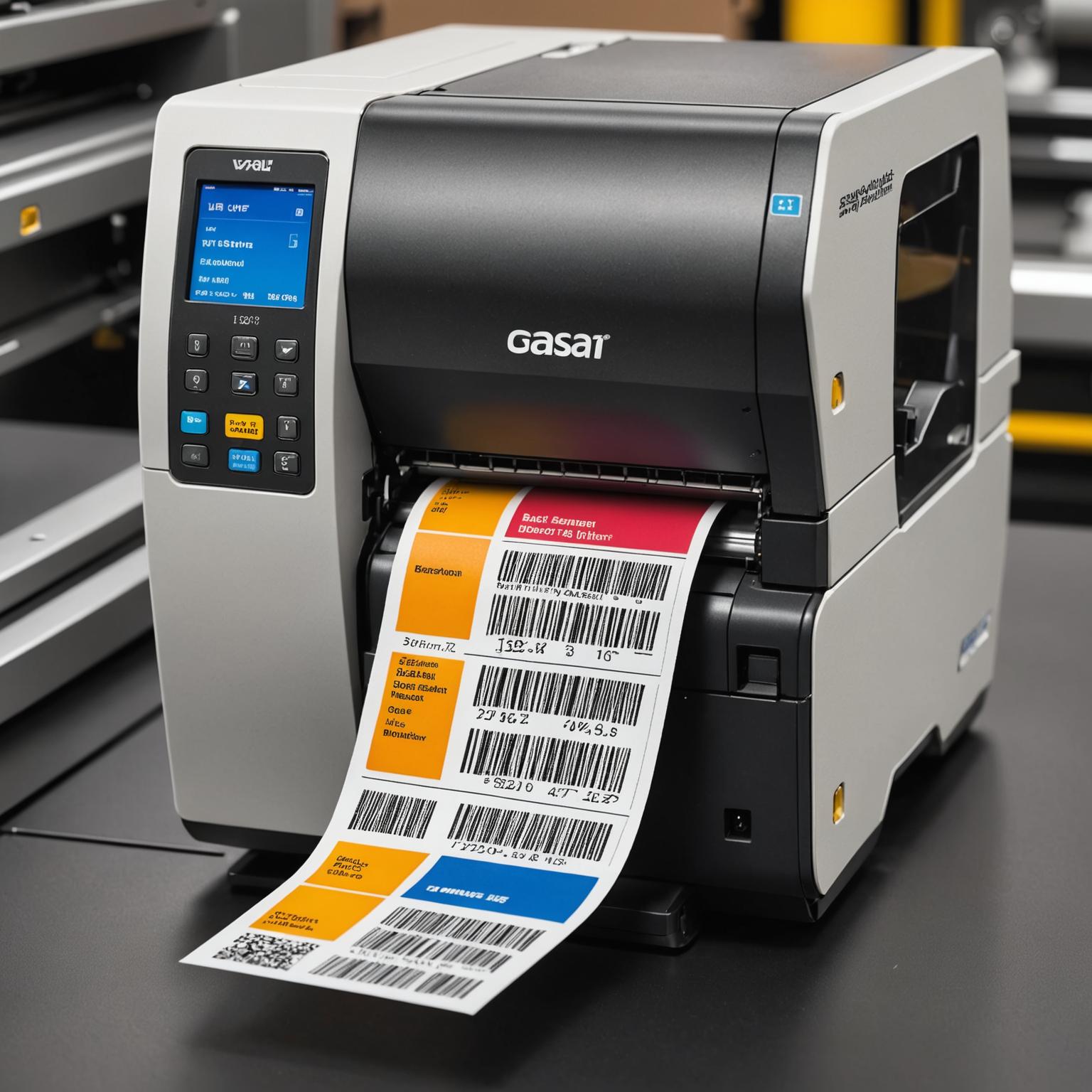In the intricate and fast-paced world of commerce, warehousing, and logistics, efficiency and clarity are paramount. The humble barcode is a cornerstone of this system, but its effectiveness relies entirely on the quality and durability of its print. This is where the crucial role of the barcode ribbon comes into play, a component often overlooked but essential for creating lasting, scannable, and informative labels. Moving beyond simple black and white, a new wave of vibrant, color-coded ribbons is transforming how businesses organize, track, and brand their products, injecting a spectrum of functionality into everyday operations.

Understanding the Core Technology: The Thermal Transfer Ribbon
A thermal transfer ribbon is the heart of the thermal transfer printing process, a method renowned for producing high-quality, resilient labels. Unlike direct thermal printing, which uses chemically treated paper that darkens with heat, thermal transfer printing involves a sophisticated interplay between the printer’s printhead, the ribbon, and the label material. The printhead applies precise heat to the ribbon, which is a thin film coated with a special ink formulation made of wax, resin, or a combination of both. This heat melts the ink off the film and onto the label surface, where it solidifies to form a crisp, permanent image. This process ensures exceptional print definition, making it ideal for high-density barcodes, fine text, and detailed graphics that need to withstand the test of time and handling.
Finding the Perfect Match: Choosing a Ribbon for Barcode Printers
Selecting the correct ribbon for barcode printers is not a one-size-fits-all decision; it is a critical choice that impacts the longevity and readability of your labels. The decision primarily hinges on the application and the type of label material being used. For general-purpose labeling on paper stock, such as shipping labels or product identification, a full wax ribbon is an economical and effective choice. When more durability is needed to resist smudging and scratching, especially on semi-gloss paper or some synthetic materials, a wax-resin ribbon offers a perfect balance of performance and price. For the most demanding environments where labels face exposure to chemicals, extreme temperatures, and heavy abrasion, a full resin ribbon is the ultimate solution. This type of thermal transfer ribbon is designed to bond permanently with synthetic label materials like polyester and polypropylene, creating virtually indestructible prints for applications in healthcare, automotive, and outdoor settings. Choosing the right ribbon for barcode printers ensures your data remains intact and scannable throughout its lifecycle.
A Vibrant Revolution: The Power of Color-Coded Ribbons
Why settle for monochrome when a full spectrum of color can enhance your operational workflow? Introducing a radiant revolution in labeling: color-coded thermal transfer ribbons. These are not merely for aesthetic appeal; they are a powerful organizational tool. Imagine a warehouse where different product categories are instantly identifiable by the color of their labels—sunshine yellow for fast-moving items, fiery red for hazardous materials, and deep indigo for quality-control holds. This visual cue system dramatically reduces human error and speeds up sorting and picking processes. In retail, a glossy orange tag can highlight a promotional item, while in pharmaceuticals, a specific color can signify an urgent medication, adding a layer of safety and efficiency. This symphony of bold, brilliant colors brings a new level of clarity and creativity to labeling, making it an invaluable asset for any industry that values distinction and reliable output.
Engineered for Durability and Professional Precision
The visual appeal of colored ribbons is matched by their engineered performance. A high-quality barcode ribbon is formulated to be highly resistant to smearing, smudging, and scratching. This durability is vital, as a compromised barcode can bring a supply chain to a halt. The coated inks bond securely to the label, ensuring that text, graphics, and barcodes remain pristine even under harsh handling or adverse environmental conditions. This professional accuracy means that every scan is successful, every piece of information is legible, and every product is tracked correctly. The crisp definition provided by a premium ribbon ensures that even the most complex, high-density barcodes are printed with flawless precision, maintaining data integrity from the production line to the final destination.
Versatility Across Industries and Eco-Conscious Design
The adaptability of these advanced ribbons is one of their greatest strengths. Their application is boundless, supporting a vast array of needs across numerous sectors. In the food and beverage industry, they can be used for date coding and allergen highlighting. For branding and marketing projects, they allow companies to print logos and promotional messages in signature brand colors, strengthening brand identity on every package. Furthermore, this functionality does not come at the expense of the environment. Built with sustainability in mind, many modern ribbons utilize eco-friendly materials and cores, helping companies minimize their environmental footprint while achieving their production and labeling goals. This blend of versatility, performance, and environmental responsibility makes the modern ribbon for barcode printers an intelligent and forward-thinking choice for any business.

